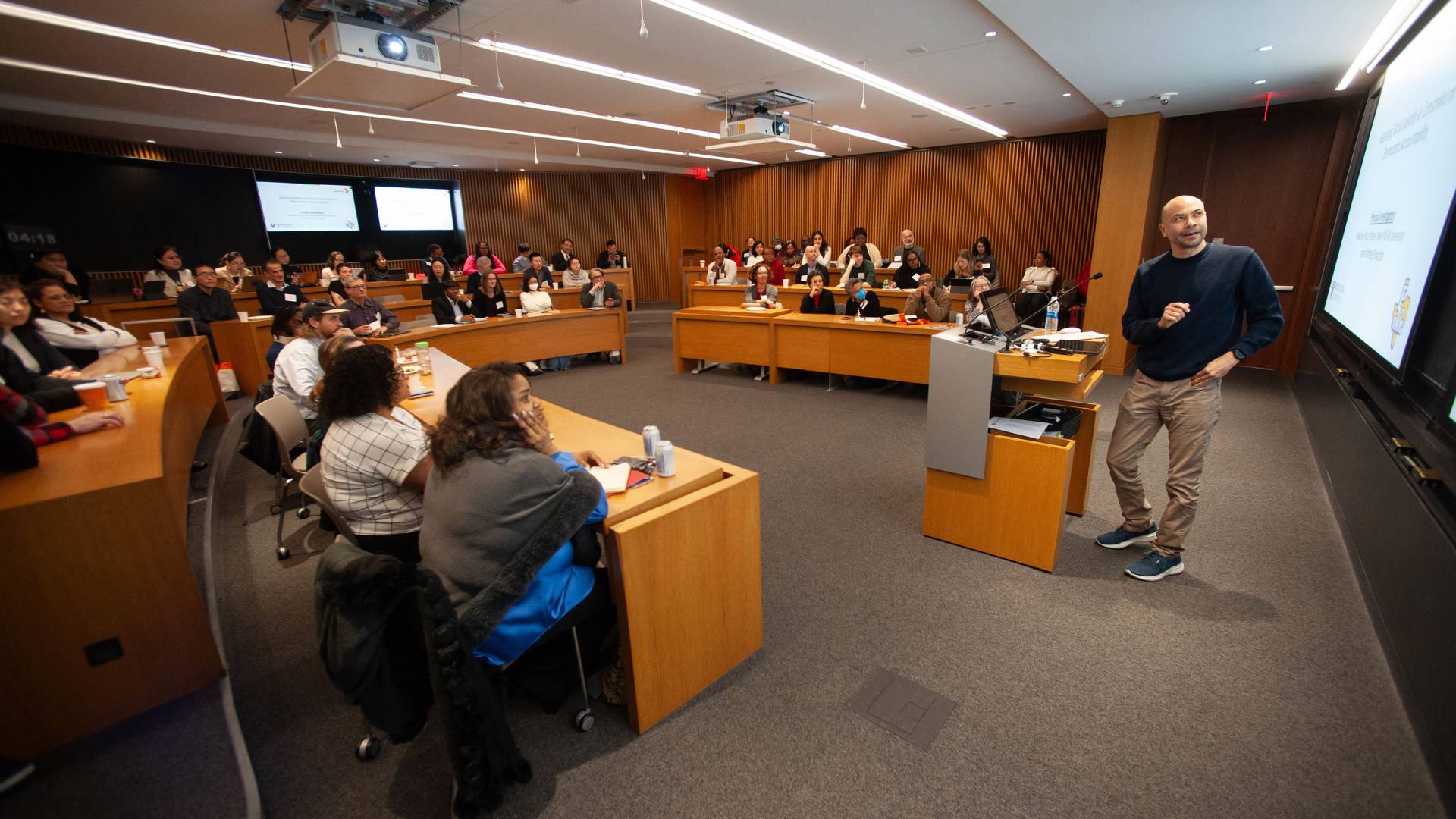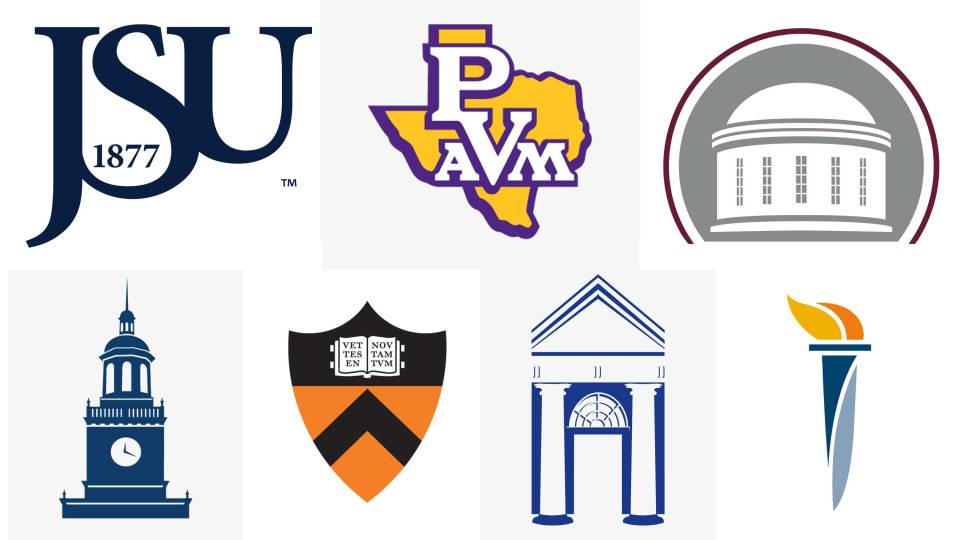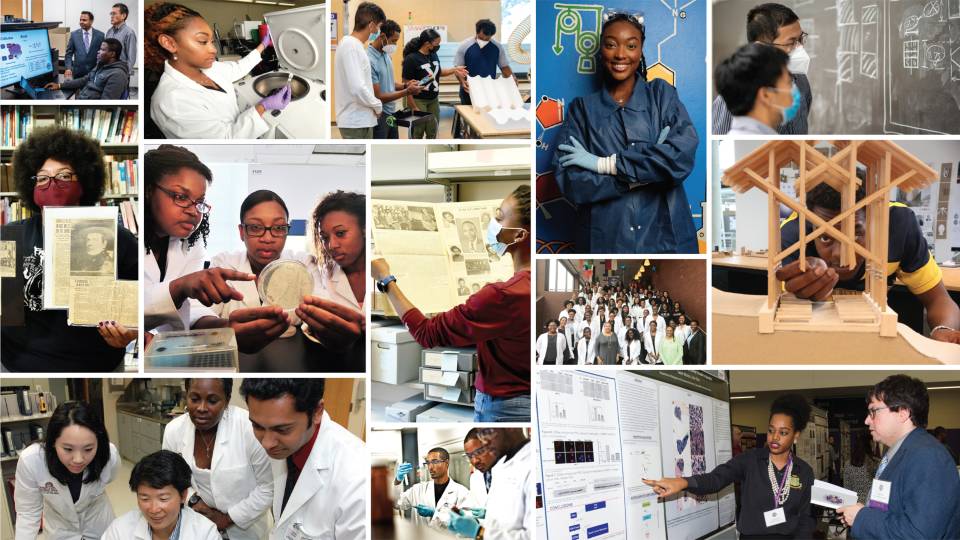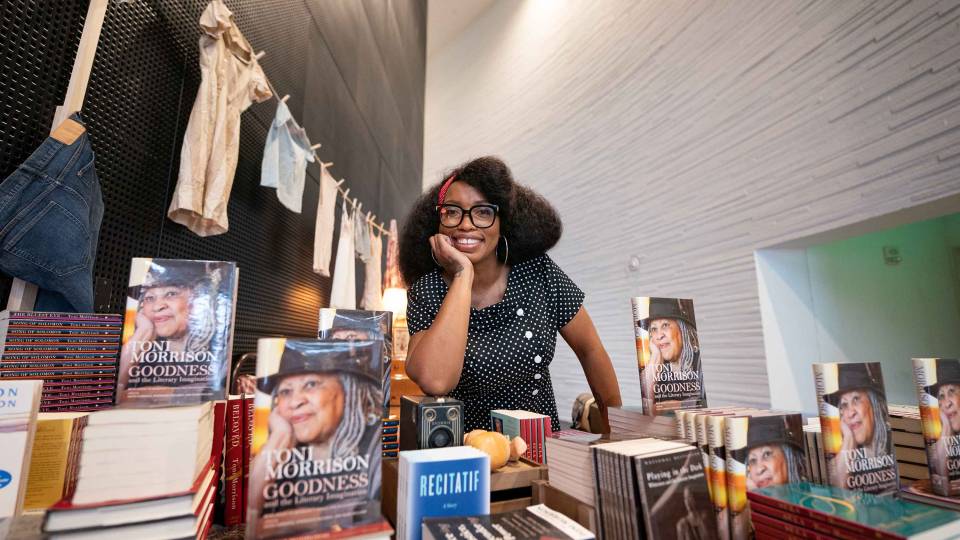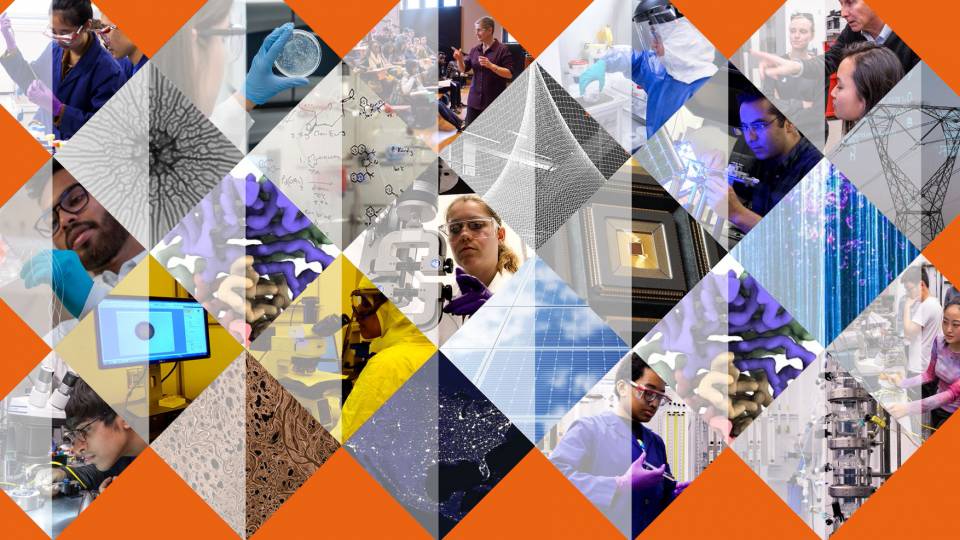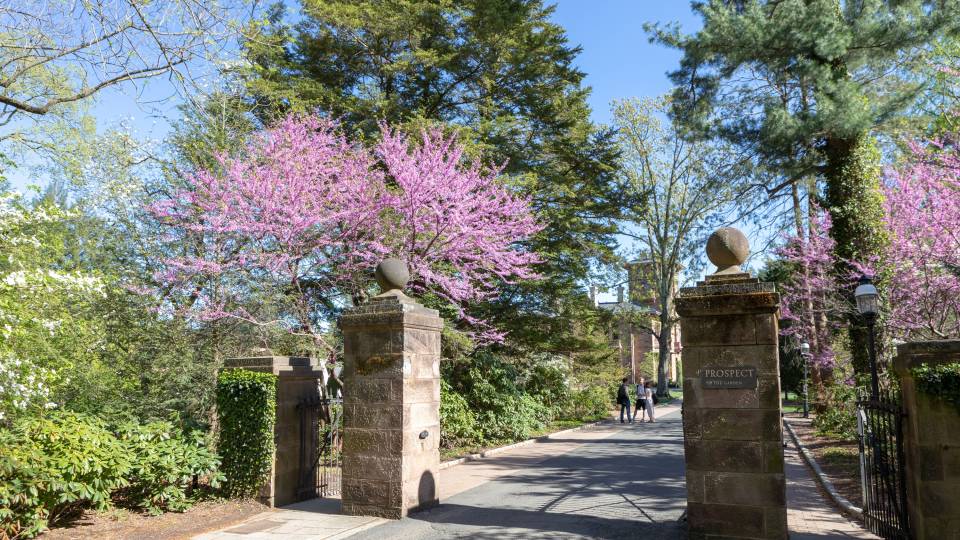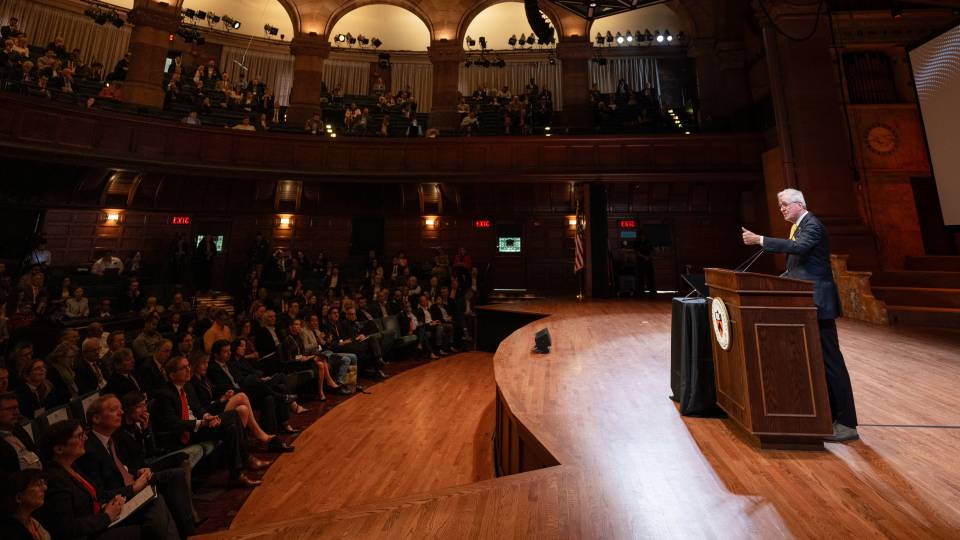Ismail White, a Princeton professor of politics and public affairs, gives a "lightning" talk at the Princeton Alliance for Collaborative Research and Innovation (PACRI) meeting on campus on Feb. 3. PACRI brings Princeton and HBCU researchers together for joint research projects.
More than 100 professors, postdoctoral researchers and students from Princeton and five historically Black colleges and universities (HBCUs) met on campus Feb. 2-3 to share results from their research collaborations and to spark ideas for further discovery and innovation.
Attendees at the Princeton Alliance for Collaborative Research (PACRI) meeting also explored ways to forge new partnerships and use research to benefit society.
Researchers led a series of “lightning” talks in which they described their projects funded by PACRI. The program pairs principal investigators and their teams from Princeton and the HBCUs to investigate a wide range of research topics.
The lightning talks ranged from cutting-edge science — developing methods to cool electronics, AI deepfake detection and improving photographic images in underwater exploration — to socially conscious efforts to improve public health and preserve a historic Jackson State University campus building important to Black history.
Research highlights included:
- A collaboration with Howard University aiming to improve the health of children with asthma who live in public housing in Washington, D.C.
- Nano exploration of crystals, by a Princeton and Jackson State team, that Princeton's Greg Scholes, the William S. Tod Professor of Chemistry, said has potential implications for quantum computing.
- A Princeton School of Public and International Affairs (SPIA) and Prairie View A&M University study of Black voter preferences for Black candidates and the voters’ willingness to hold their elected officials accountable.
- A Jackson State and Princeton analysis of the impact of federal disability insurance programs on the lives of disabled residents of Kentucky and Mississippi.
- A collaboration with University of Maryland Eastern Shore (UMES) on a hydrologic model to study coastal flooding in the Chesapeake Bay region. Reed Maxwell, Princeton’s William and Edna Macaleer Professor of Engineering and Applied Science and professor of civil and environmental engineering and the High Meadows Environmental Institute, said questions include whether groundwater plays an unseen role in climate impacts on the estuary system.
In summarizing her PACRI team’s research, an oral history project on heirloom gardens in the southeastern states, Kimberly Jackson, a professor of biochemistry and chair of the Department of Chemistry and Biochemistry at Spelman College, who is collaborating with Princeton researchers Tessa Desmond (SPIA) and assistant professor of anthropology Hanna Garth, said, “It’s been really wonderful to work on this project, and I’m grateful that we’ve been able to come together.”
After describing a collaboration with UMES on using the gene editing tool CRISPR to try to eradicate a mildew that devastates grape plants, Jonathan Conway, a Princeton assistant professor of chemical and biological engineering, noted the broad range of the projects discussed.
“It’s exciting to see research across all different fields in one place,” Conway said, adding that it was also exciting to present his and his colleagues’ work to researchers from other fields.
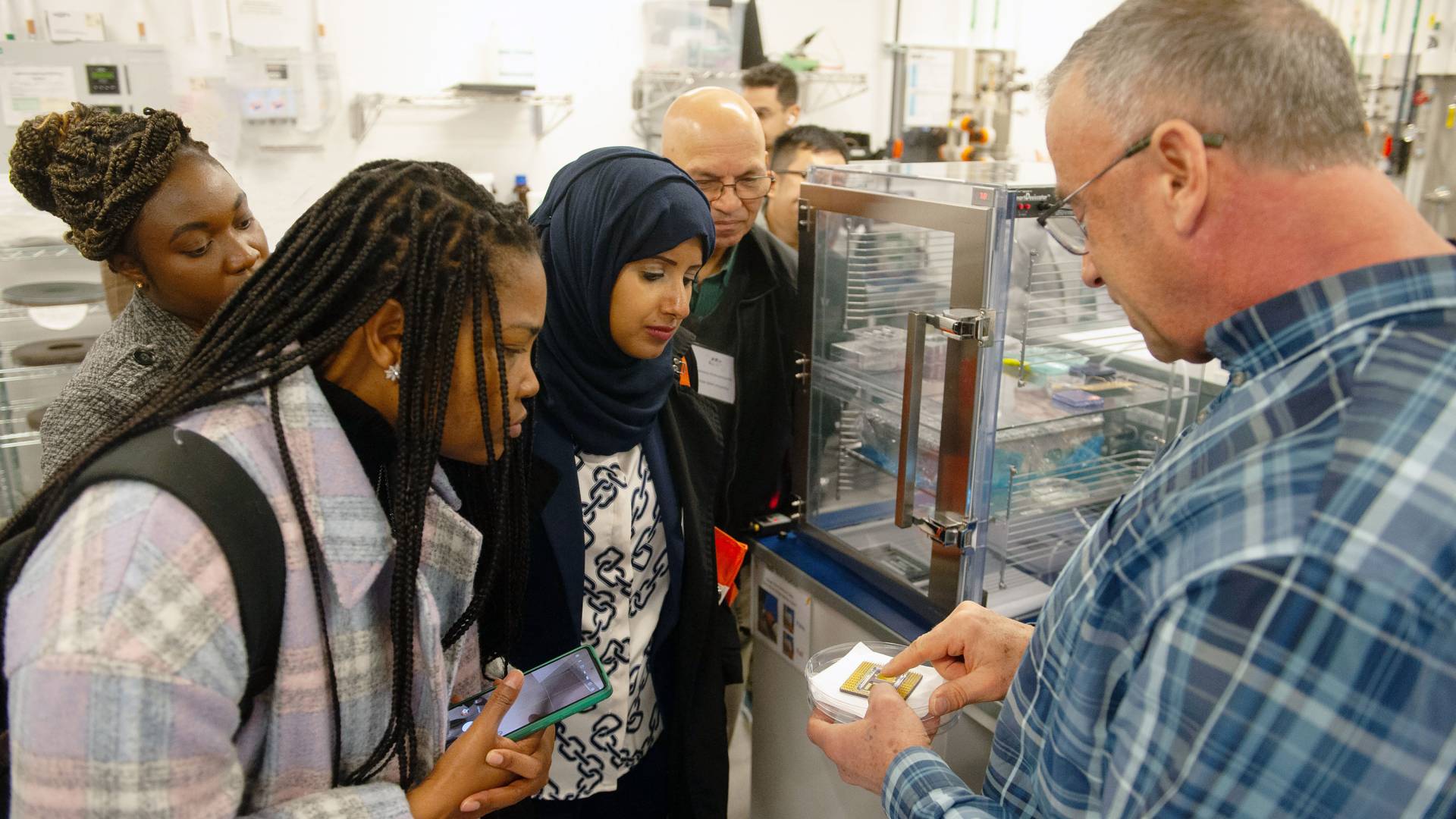
Bert Harrop (right), senior tech support specialist and MNFC Packaging Lab manager, shows PACRI visitors around the lab at the Princeton Materials Institute.
Sonya Smith, a professor and director of the Atmospheric Sciences Program at Howard University, noted that one of her former undergraduate students is a Princeton graduate student working with Howard Stone, the Donald R. Dixon '69 and Elizabeth W. Dixon Professor of Mechanical and Aerospace Engineering.
“The PACRI program,” said Smith, “has been invaluable.”
At a welcoming reception, Princeton Vice Dean for Innovation Craig Arnold noted the “incredible collection of 20 different research efforts that you’re sharing across all divisions of the university.”
Arnold, who is also the Susan Dod Brown Professor of Mechanical and Aerospace Engineering and leader of PACRI, noted that it got its start in 2022 when two Princeton scholars had “the insight and foresight to realize that by bringing together colleagues across world-leading research institutions with different strengths, we are able to tackle problems and ideas that cannot easily be done by a single investigator or single institution alone.”
The scholars were Rodney Priestley, dean of the Princeton Graduate School and the Pomeroy and Betty Perry Smith Professor of Chemical and Biological Engineering, and Tod Hamilton, a Princeton professor of sociology.
“What’s special about the PACRI program is that we’re bringing together collaborators who might not have interacted except for the program,” Peter Schiffer, Princeton’s dean for research and a professor of physics, said at the reception. “We’re allowing great minds to come together and work on these hard problems. It really is a program that covers all the fields, all the different disciplines that we have at great universities.”
Michele Minter, Princeton’s vice provost for institutional equity and diversity, told participants that the University administration is proud to support their collaborations. “PACRI not only benefits from the longstanding excellence of Black institutions, but it draws from the possibilities of innovation, stimulation and problem-solving — the very heart of excellence that follows when we are all intentional about seeking out the widest range of talent and giving people access and putting them into conversation,” she said.
The meeting, organized by Princeton’s Corporate Engagement and Foundation Relations office, began with workshops led by Princeton staff. Students attended one on telling their research stories, and faculty and postdocs chose between sessions on community-engaged research and research communications, the latter led by the Princeton Plasma Physics Laboratory.
Next, some attendees toured the robotics laboratory in the School of Engineering and Applied Science, while others visited the Imaging and Analysis Center and the Micro/Nanofabrication Center at the Princeton Materials Institute. A third group was shown several centuries’ worth of printed materials, including the Black Orpheus literary journal published in Nigeria from the 1950s to the mid-1970s, from the Princeton University Library’s special collections.
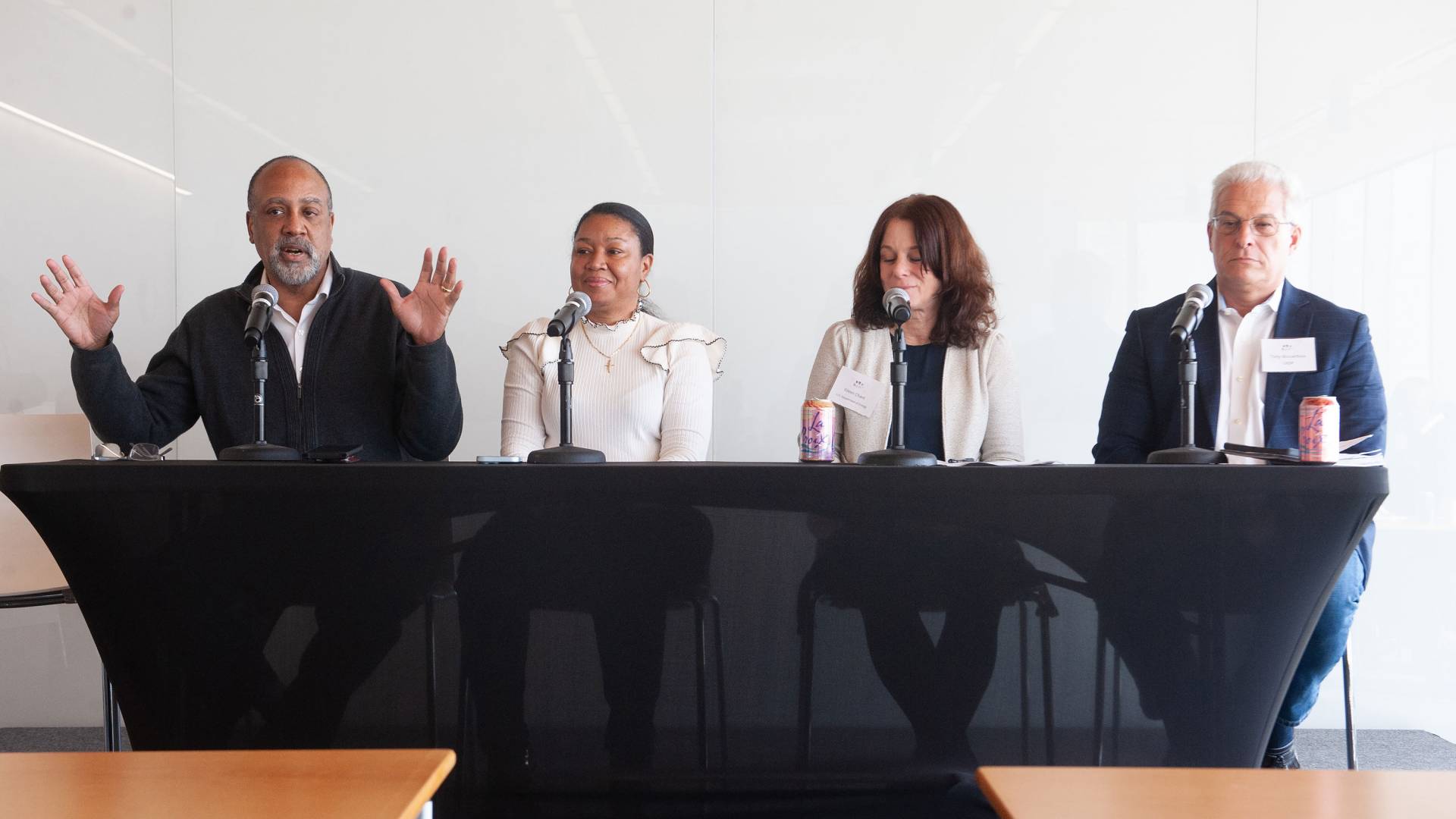
Chad Womack, vice president of national STEM programs and tech initiatives at UNCF, speaks at a luncheon panel discussion on the value of partnerships. The other panelists are (left to right) Almesha Campbell of Jackson State University, Eileen Chant of the U.S. Department of Energy, and Anthony Boccanfuso of UIDP.
A luncheon on the second day of the meeting featured a discussion on building research partnerships and developing intellectual property. Panelists were Anthony Boccanfuso, president and CEO of UIDP, an organization that encourages companies to do research with colleges and universities; Almesha Campbell, assistant vice president for research and economic development at Jackson State; Eileen Chant, outreach program manager for the U.S. Department of Energy Office of SBIR/STTR programs; and Chad Womack, vice president of national STEM programs and tech initiatives at UNCF.
“How can we help take this one step further?” Arnold asked in introducing the panel. “How can we encourage the development of partnerships that can help all of us address those most challenging of research questions, to drive innovation and to better humanity?”
During the discussion, HBCU scholars described challenges they face in getting financial support for research. Gloria Billingsley, a professor and interim chair of the Department of Public Policy and Administration at Jackson State, urged her colleagues to have hope for the future while holding on to what made their institutions what they are today.
“Remember who we are, what we’re made of, and the lessons we’ve learned over time,” Billingsley said. She also praised PACRI. “We have been treated as equal partners,” she said. “We are respected for what we bring to the table.”
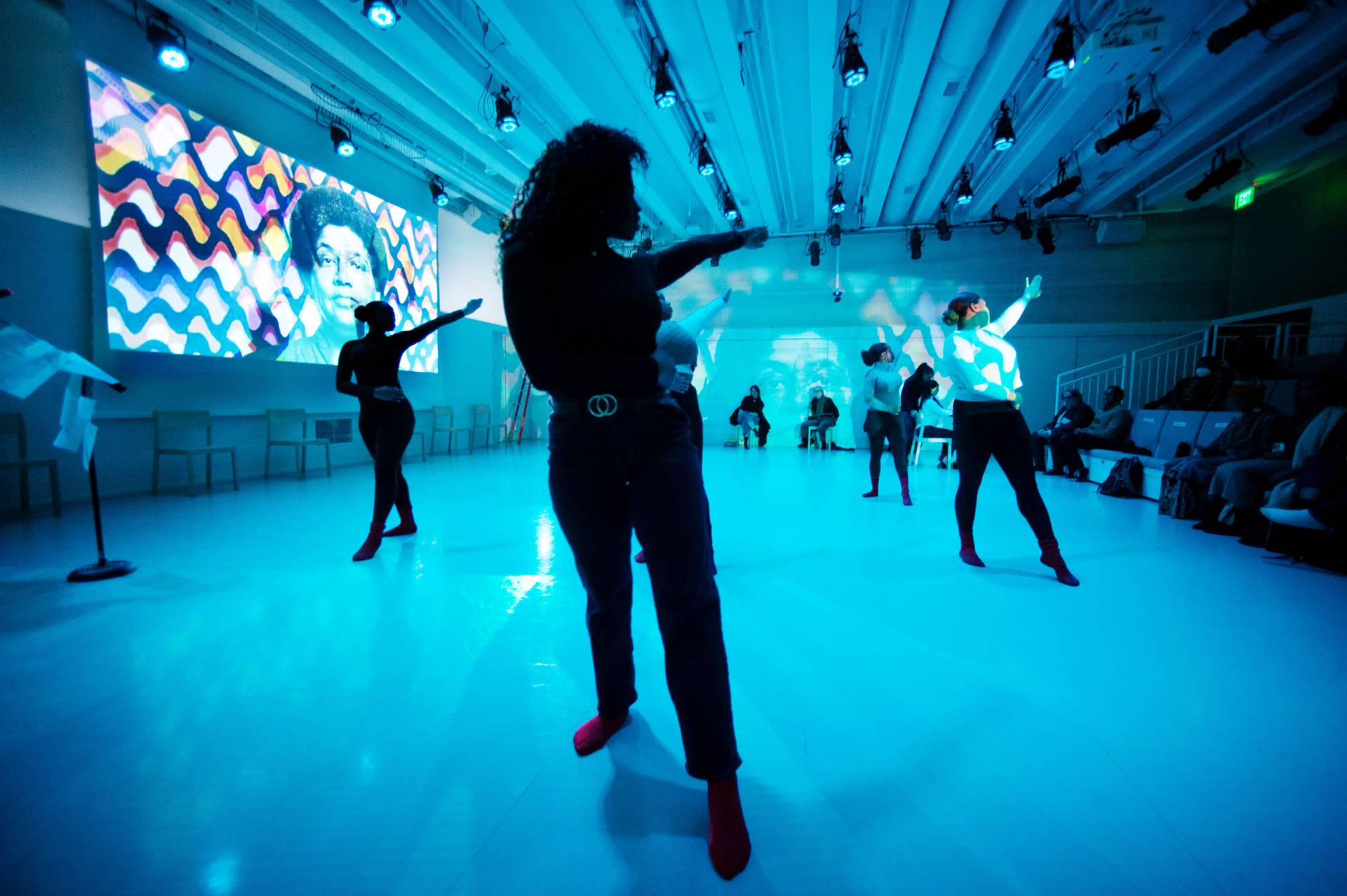
The concluding event at the PACRI meeting was a multimedia, work-in-process presentation of "Audre Lorde Archive," as choreographed/conceived by T. Lang, associate professor of dance and inaugural chair of the Spelman College Dance Performance and Choreography Department, in collaboration with Chesney Snow, a lecturer in theater at Princeton. The work, shown at the Lewis Center for the Arts, is part of a larger performance research project led by Brian Herrera, associate professor of theater at Princeton, and Al-Yasha Williams, associate professor of philosophy and religious studies at Spelman.
